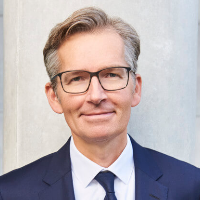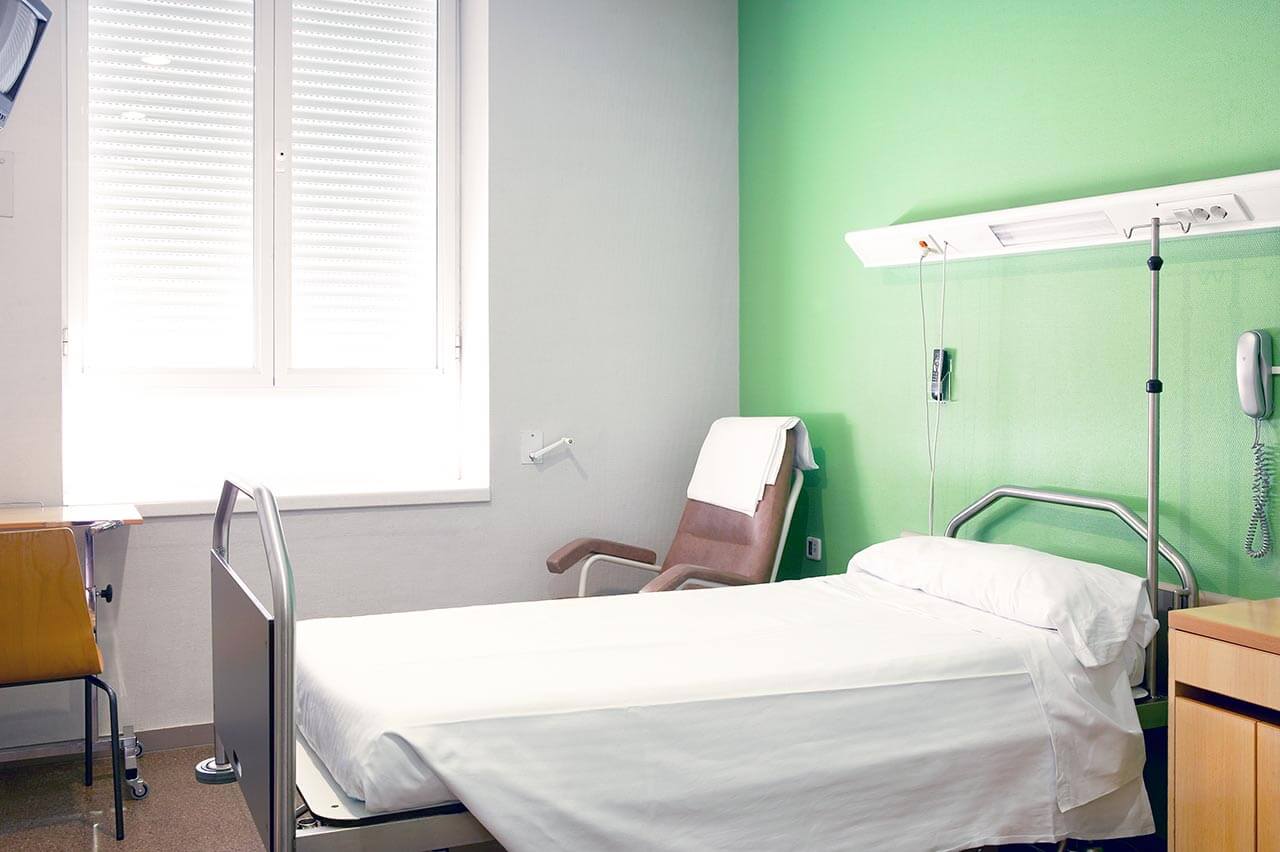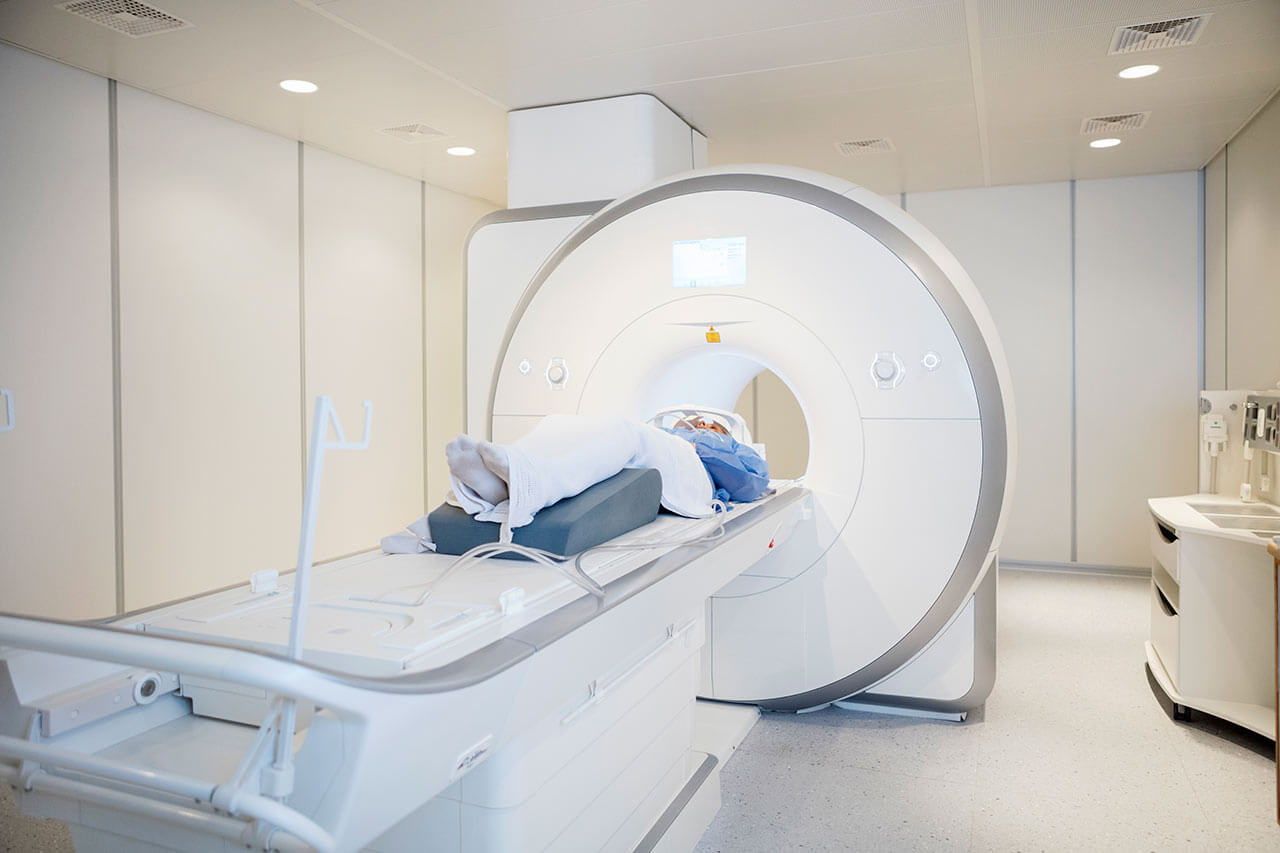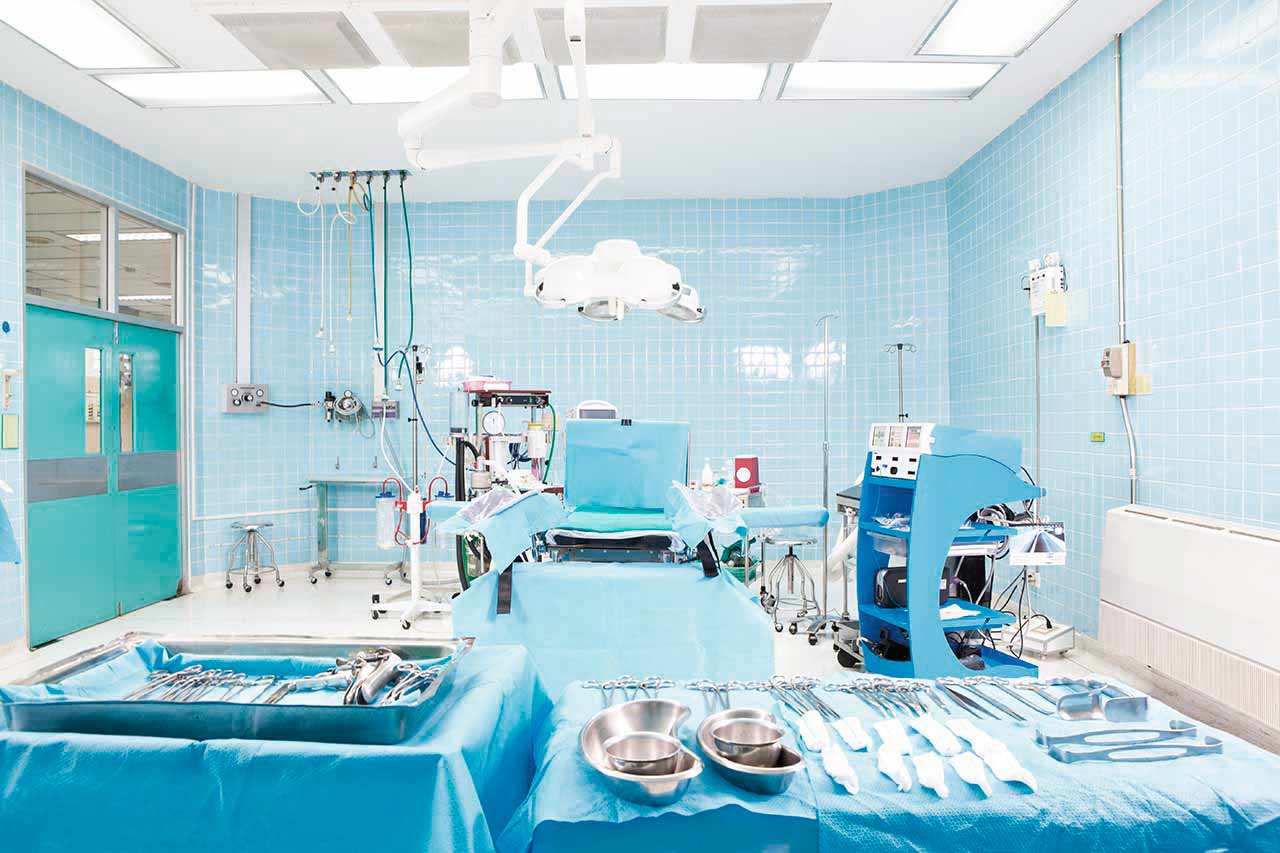
The program includes:
- Initial presentation in the clinic
- clinical history taking
- review of medical records
- physical examination
- laboratory tests:
- complete blood count
- biochemical analysis of blood
- indicators of inflammation
- indicators blood coagulation
- ophthalmologic examination:
- slit-lamp examination
- optical coherence tomography OCT
- pupil function tests
- ocular motility test
- ophthalmoscopy
- perimetry (visual field test)
- computer perimetry
- visometry (without correction and with correction)
- keratometry
- pachymetry
- refractometry (objective, subjective, cycloplegic)
- autorefractometry
- non-contact tonometer
- biomicroscopy
- services of chief physician and all leading experts
- preparation according to preoperative standard
- keratoplasty
- explanation of future recommendations
Required documents
- Medical records
Service
You may also book:
 BookingHealth Price from:
BookingHealth Price from:
About the department
The Department of Adult and Pediatric Ophthalmology at the University Hospital of Ludwig Maximilian University of Munich offers the full range of services in this medical field. The department has gained a reputation as one of the largest and most respected European medical facilities in the area of its specialization. All modern conservative and surgical treatment methods for eye diseases are available here. A special focus is on minimally invasive treatment, gene therapy, and advanced laser technologies, which are constantly being improved. The department's specialists most often treat patients with cataracts, glaucoma, eye tumors, age-related macular degeneration, uveitis, and other pathologies. The department's doctors are competent in examining the eye and its appendages in children of all age groups, examining the eye considering a child's age, and treating detected abnormalities. The primary task of the department's doctors is to preserve their patients' vision with the help of the most sparing therapeutic methods. The department is headed by Prof. Dr. med. Siegfried Priglinger.
Cataract is one of the most common pathologies in the department's clinical practice. The disease leads to the clouding of the lens and significant vision loss. Mature cataract is poorly amenable to drug therapy, so the only effective treatment is surgery. The department's ophthalmologists use both classical surgery and interventions with a femtosecond laser (Femto LDV Z8). As a rule, the operation is performed under local anesthesia using eye drops or injections. During the intervention, the clouded lens is removed using ultrasound or a femtosecond laser through a small incision and is replaced with a special artificial lens. The duration of the surgical intervention is 10-20 minutes. It is performed on an outpatient basis. The department's specialists have rich experience in cataract treatment and demonstrate high success rates even in elderly patients.
The team of the department's ophthalmologists also effectively treats glaucoma. This pathology is caused by an impairment of intraocular fluid outflow and damage to the optic nerve. The disease is characterized by rapid progression, and in the absence of timely treatment, a patient is threatened with irreversible blindness. Glaucoma can be treated with both conservative and surgical methods. In the early stages, doctors at the medical facility often prescribe only special eye drops, the action of which is aimed at reducing the production of intraocular fluid and improving its outflow. As for the operation, trabeculectomy and iridectomy have proven themselves to be the best. These interventions are usually performed using modern laser technology. The optimal type of surgery is determined on an individual basis.
An integral part of the work of the department's specialists is the vision screening and treatment of eye diseases in children. The medical facility admits premature babies, newborns, infants, young children, and adolescents. Pediatric ophthalmologists treat amblyopia, strabismus, diseases of the eyelids, lacrimal duct, and conjunctiva, retinopathy of prematurity, congenital cataracts, and glaucoma. Depending on the severity of the disease, conservative therapy or surgical intervention may be conducted.
The department's range of medical services includes the following options:
- Laser vision correction (refractive eye surgery) for hyperopia, myopia, astigmatism and presbyopia
- Femtosecond laser
- Excimer laser
- Lens surgery
- Multifocal intraocular lens implantation
- Diagnostics and treatment of diabetic retinopathy
- Non-proliferative retinopathy
- Diabetic macular edema
- Injection therapy
- Laser therapy
- Proliferative retinopathy
- Panretinal laser coagulation
- Vitrectomy (in the advanced stages of the disease)
- Diagnostics and treatment of all forms of uveitis and scleritis
- Drug therapy
- Diagnostics and treatment of cataracts
- Classical lens removal surgery followed by intraocular lens implantation
- Femtosecond laser lens removal (Femto LDV Z8) followed by intraocular lens implantation
- Diagnostics and treatment of glaucoma
- Drug therapy with eye drops
- Laser trabeculectomy
- Laser iridotomy
- Diagnostics and treatment of corneal diseases
- Keratitis
- Endothelial corneal dystrophy (Fuchs' dystrophy)
- Keratoconus
- Crosslinking
- Implantation of corneal segments (rings)
- Corneal transplantation (keratoplasty)
- Diagnostics and treatment of eye diseases in premature babies, newborns, infants, young children, and adolescents
- Amblyopia
- Strabismus
- Diseases of the eyelids and lacrimal ducts
- Conjunctival disorders
- Retinopathy of prematurity
- Congenital cataract or glaucoma
- Rare hereditary eye diseases
- Drug therapy
- Surgical interventions
- Diagnostics and treatment of age-related macular degeneration
- Injection therapy (intraocular injections)
- Diagnostics and treatment of retinal and vitreous body diseases
- Epiretinal gliosis
- Transconjunctival seamless pars plana vitrectomy with the removal of epiretinal membranes and internal limiting membrane under local anesthesia (microsurgery)
- Retinal detachment
- Local filling
- Pars plana vitrectomy
- Epiretinal gliosis
- Diagnostics and treatment of strabismus and eye movement disorders
- Selection of the proper glasses, including prismatic ones
- Surgical treatment
- Combined treatment methods
- Diagnostics and treatment of dry eye syndrome
- Application of gels and ointments
- Anti-inflammatory therapy
- Use of corticosteroid eye drops
- Antibiotic therapy
- Diagnostics and treatment of malignant tumors of the eye, eye appendages, eyelids, and metastases in the choroid of the eye (for example, in breast cancer)
- Conservative treatment methods
- Surgical treatment methods, including plastic reconstructive interventions
- Diagnostics and treatment of other diseases of the eye and its appendages
Curriculum vitae
Higher Education and Professional Career
- 1991 Beginning of studies at the Medical Faculty of the University of Vienna.
- 1998 Doctoral thesis defense in Internal Medicine with honors.
- 1998 Research Fellowship at the Schepens Eye Research Institute at the Harvard Medical School, Boston, "Immunobiological aspects of retinal transplantation".
- 1999 Internship, Department of Cardiac Surgery at the Salzburg Hospital (LKA Salzburg); Department of Traumatology and Internal Medicine at the General Hospital Linz (AKH Linz).
- 2000 Intern, Department of Adult and Pediatric Ophthalmology at the University Hospital of Ludwig Maximilian University of Munich.
- 2001 Research Fellow, Department of Adult and Pediatric Ophthalmology at the University Hospital of Ludwig Maximilian University of Munich.
- February 2005 Board certification in Ophthalmology.
- June 2005 Senior Physician, Department of Adult and Pediatric Ophthalmology at the University Hospital of Ludwig Maximilian University of Munich.
- July 2006 Habilitation in Ophthalmology.
- 2007 Head of the Department of Ophthalmology at the General Hospital Linz (AKH Linz).
- 2001 Premature appointment as an Extraordinary Professor at Ludwig Maximilian University of Munich.
- 2015 Head of the Department of Adult and Pediatric Ophthalmology at the University Hospital of Ludwig Maximilian University of Munich.
Clinical Interests
- Treatment of retinal diseases: age-related macular degeneration and diabetic retinopathy.
- Surgical treatment of retinal pathologies.
- Modern surgical treatment of cataracts, including femtolaser operations.
- Minimally invasive corneal transplantation (DMEK and DALK).
- Refractive eye surgery for ametropia.
- Surgical treatment of glaucoma.
Research Interests
- Clinical researches:
- Evaluation of new treatments for retinal vein occlusion.
- Innovations in minimally invasive retinal surgery.
- Clinical outcomes and examination with optical coherence tomography after pars plana vitrectomy with peeling.
- Anti-VEGF drugs for diabetic macular edema.
- Non-perforating corneal transplantation: minimally invasive techniques for endothelial and basement membrane transplantation.
- Femtosecond laser cataract surgery.
- ReLEx SMILE: evaluation of clinical (refraction, dry eye) and structural changes after minimally invasive laser corneal surgery.
- Laser capsule polishing for secondary cataract prevention.
- Basic researches:
- Molecular and cell-biological aspects of wound healing in ophthalmic surgery.
- Pathophysiology of age-related macular degeneration.
- Secondary cataract prevention.
Scientific Awards
- 1993 - 1998 Scholarship of the University of Vienna.
- 1997 - 1998 Senate Scholarship of the University of Vienna.
- 1998 Special financing, Upper Austria.
- 1999 Research Scholarship of the Harvard Medical School, Boston.
- 2001 1st Prize for the Report of the Rhenish-Main Association of Ophthalmologists.
- 2006 Scientific Prize of the German Ophthalmological Society, Kröner Foundation, Munich.
- 2006 Fellowship of the European Society of Cataract and Refractive Surgery (ESCRS).
- 2006 BaCaTec Award (Bavaria California Technology Center).
- 1st Prize for the Report of the French Society of Ophthalmology (SFO).
- 2007 Video Award, Zermatt Winter Meeting.
Memberships in Professional Societies
- American Academy of Ophthalmology (AAO).
- European Society of Cataract and Refractive Surgery (ESCRS).
- German Ophthalmological Society (DOG).
- Munich Ophthalmological Society (MOG).
- Austrian Ophthalmological Society (ÖOG).
- MACULA SOCIETY.
- CLUB JULES GONIN.
- EURETINA.
Photo of the doctor: (c) LMU Klinikum
About hospital
According to the Focus magazine, the University Hospital of Ludwig Maximilian University of Munich is regularly ranked among the best medical institutions in Germany!
The hospital is the largest multidisciplinary medical facility, as well as a leading research and training center in Germany and Europe. The hospital is proud of its bicentenary history and tirelessly confirms its primacy at the national and international levels. The outstanding quality of medical care is complemented by highly productive research activities, thanks to which many effective diagnostic and therapeutic methods, saving people’s lives, have been presented in medical practice.
The medical facility includes two main buildings, Grosshadern and Innenstadt. The hospital has 29 specialized departments, 53 interdisciplinary centers, 11 institutes, and many sections. More than 500,000 patients are treated here every year, which indicates the hospital's excellent reputation. A large and highly professional medical team, consisting of 1,800 doctors and 3,300 nursing staff, works for the benefit of patients. The hospital has 2,000 beds to accommodate patients.
The hospital's infrastructure deserves special attention: advanced diagnostic equipment that allows doctors to detect the slightest pathological changes in the human body, the latest operating rooms with highly efficient monitoring systems, robot-assisted surgical systems that facilitate sparing operations, and proper postoperative care.
Excellent technical resources and highly professional medical staff are undoubtedly the hospital's pride, but the medical facility also pays attention to the patient's comfort and to a humane attitude toward their life situation. When providing the necessary medical care, doctors and nursing staff always show a friendly attitude, inform patients in detail about the upcoming diagnostic and therapeutic procedures, gladly answer all questions of interest to patients, and provide moral support during the therapeutic process.
The hospital has many prestigious quality certificates, including a DIN EN ISO 9001 certificate, an IQM certificate, an endoCert certificate, certificates from the German Cancer Society (DKG) for treating various types of cancer, the German Cardiac Society (DGK), the German Society for Orthopedics and Trauma Surgery (DGOU), etc. Thus, patients can count on the best possible treatment outcome due to the use of the most effective and, at the same time, sparing therapeutic techniques.
Photo: (с) depositphotos
Accommodation in hospital
Patients rooms
The patients of the University Hospital of Ludwig Maximilian University of Munich live in comfortable, spacious, single and double patient rooms with a modern design. Each room is equipped with an ensuite bathroom with a shower and toilet. The furnishing of a standard patient room includes a comfortable bed, the position of which can be adjusted using the remote control, a locker for storing personal belongings, a TV, and a telephone. Also, if desired, you can connect to the Internet. In addition, patients can opt for enhanced-comfort rooms, with a safe, a fridge, and upholstered furniture.
The hospital has an excellent infrastructure. The medical facility’s area houses a bank, ATMs, a hairdresser, shops with a wide range of food, drinks, newspapers, magazines, and personal hygiene items, play areas for children, and a beautiful garden for walking, etc.
Meals and Menus
The patient and his accompanying person are offered a daily choice of three menus, including a vegetarian one. If you are on a specific diet for any reason, you will be offered an individual menu. Please inform the medical staff about your dietary preferences prior to the treatment.
Further details
Standard rooms include:
Religion
Religious services are available upon request.
Accompanying person
Your accompanying person may stay with you in your room or at a hotel of your choice during the fixed program.
Hotel
You may stay at a hotel of your choice during an outpatient program. Our managers will help you to choose the best option.
The hospital offers a full range of laboratory tests (general, hormonal, tests for infections, antibodies, tumor markers, etc.), genetic tests, various modifications of ultrasound scans, CT scans, MRI and PET/CT, angiography, myelography, biopsies, and other examinations. Treatment with medications, endoscopic and robotic operations, and stereotaxic interventions are carried out here, modern types of radiation therapy are also used. The hospital offers patients all the necessary therapeutic techniques.
- Allogeneic bone marrow transplantation
- Microsurgical transplantation of head and neck tissues
- Microsurgical resection of brain tumors with intraoperative fluorescence
- Minimally invasive treatment of spine pathologies
- Joint replacement with postoperative rehabilitation (fast track program)
Patients with benign and malignant neoplasms of various localizations, pathologies of arteries and veins, herniated discs, osteoporosis, congenital and acquired pathologies of the musculoskeletal system, benign and malignant pathologies of the mammary gland, and other pathologies.
Which specialties of the University Hospital of Ludwig Maximilian University of Munich are the best?
- Interventional and diagnostic neuroradiology
- Vascular surgery
- Cardiac surgery
- Mammalogy
- Gastroenterology and hepatology
Over 1,700 highly qualified doctors work at the hospital.





